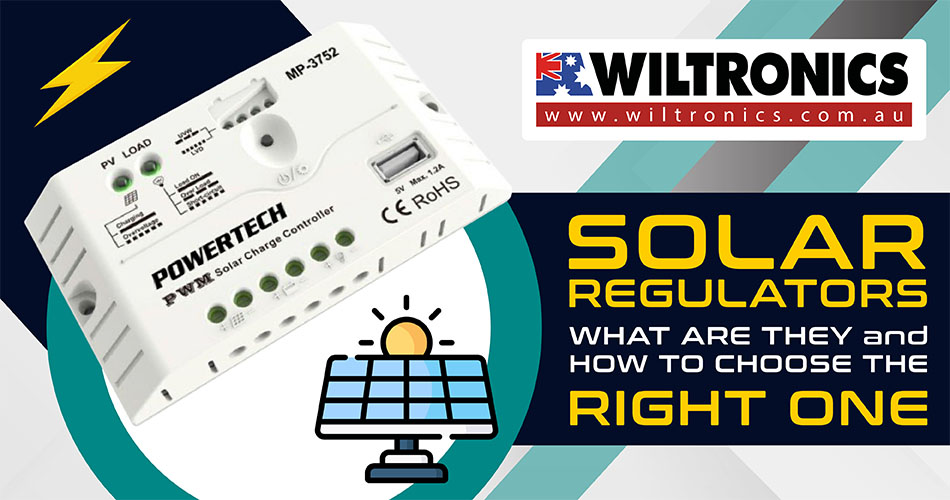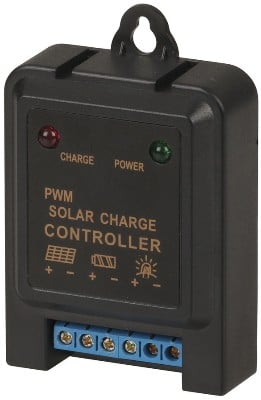Solar Regulators: What Are They and How to Choose the Right One?
February 11, 2022

If you own solar panels, how would you know if need solar regulators? How do you choose the right type for your needs?
If you live in an area with a suitable solar rating, solar panels are worth installing. Particularly if you want to go green, they will make a perfect addition to your home.
Solar panels exist because of the powerful energy from the sun. In return, they provide heaps of benefits that also favour our planet.
But keep in mind that the sun is very powerful and can be harsh. For one, using the sun’s energy via solar panels can fry the battery through overcharging.
This is where solar regulators come into the picture. They regulate the charging current to provide the most effective charge without overcharging.
Regardless, do your solar panels really need one? If you know about solar regulators—how they work and their basics, then you already have the answer.
If not, then this article is for you!
Solar Regulators Explained
A solar regulator provides an output voltage that is safe and usable to charge a battery. It is a small box consisting of solid-state circuitry placed between a solar panel and a battery.
It regulates the amount of charge coming from the panel and keeps batteries from overcharging. In particular, voltage and current.
Also known as a solar charge controller, a regulator works like a regular battery charger. For one, regulating the current flow.
Most 12V solar panels put out about 16 to 20 volts. If there is no regulation, the batteries will be damaged from overcharging. Most batteries need around 14 to 14.5 volts to get fully charged.
Do I Always Need a Solar Regulator?
Not always, but usually. The safest way to know if you need one or not is to take Battery Amp Hour Capacity and divide this by the solar panel max. power amp rating.
If the quotient is above 200, you do not need a solar regulator. But if the number is less than 200, then you need one.
For instance, if you have a 1000 amp hour battery and a 10-watt panel, take 100 and divide it by .6 (600mA), and you get 166.6. Since the result is less than 200, you need a regulator.
Now, suppose you have a 5-watt panel in the above example. Take 100 and divide it by .3 (300mA), and you come up with 333.33. This time, it is more than 200; hence you do not need one.
If it is the latter, you still need a blocking diode to prevent the battery from discharging at night.
In short, you do not need a regulator unless you have more than 5-watt of solar for every 100-amp hours of battery capacity.
Two Types of Solar Regulators
There are two types of solar regulators:
- Pulse Width Modulation (PWM) regulators
- Maximum Power Point Tracking (MPPT) regulators
PWM Regulators
These operate by making a connection directly from the solar array to the battery bank. During bulk charging, the array output voltage is pulled down to the battery voltage. This happens when there is a continuous connection from the array to the battery bank.
As the battery charges, the battery voltage rises. Thus, the voltage output of the solar panel rises as well, using more of the solar power as it charges.
To put it simply, PWM controllers turn the solar input on and off (several times per second). When the panel is connected to the battery, they will switch it on or off when the battery voltage rises. This limits the power transferred to the battery and, eventually, the voltage from rising further.
PWM regulators can be considered as an electronic switch between the solar panels and the battery:
- The switch is on when the charger mode is in bulk charge mode.
- The switch is flicked on and off as needed to hold the battery voltage at the absorption voltage.
- Then, it is turned off at the end of absorption while the battery voltage drops to the float voltage.
- The switch is once again flicked on and off to hold the battery voltage at the float voltage.
Note: When the switch is off, the panel voltage will be at the open-circuit voltage (Voc). When it is on, the panel voltage will be at the battery voltage. The voltage drops between the panel and the controller.
MPPT Regulators
These operate by measuring the Vmp voltage of the panel. Then, MPPT controllers down-converts the PV voltage to the battery voltage.
The power into the charge controller is equal to the power out of the regulator. Thus, when the voltage drops to match the battery bank, the current increases. This lets you use more of the available power from the panel.
Moreover, during low light level situations, the MPPT regulator will compensate. It will then find a new point where the solar cell delivers its maximum power output.
This type of solar regulator can also be considered a “smart DC-DC converter”. For one, it drops the panel voltage down to the voltage required to charge the battery.
The current is increased in the same ratio as the voltage is dropped. It ignores heating losses in the electronics, just like a conventional step-down DC-DC converter.
To match a panel to an MPPT regulator, experts recommend taking note of the following:
- The panel open-circuit voltage (Voc) must be under the permitted voltage.
- The VOC must be above the start voltage for the controller to kick in.
- The maximum panel short circuit current (Isc) must be within the range specified.
- The maximum array wattage is allowed to have up to 520W attached.
Choosing the Right Solar Regulator
If the solar panel you are setting up is small and you are on a budget, a good quality PWM regulator will do the job. It makes an excellent low-cost option for smaller systems where efficiency is not critical.
If your solar panels have a maximum power voltage (Vmp) of up to 18V for charging a 12V battery, go for PWM.
Now, if you have a large solar setup and battery bank to be supplied, MPPT is definitely the way to go. It is best for larger systems where the extra 20% or more energy harvesting is worthwhile.
MPPT is also a great choice when the solar array voltage is higher than the battery voltage, such as using house panels for charging 12V batteries.
Have a look at our available solar regulators down below!
1. 20A Solar Charge Controller 12/24V with USB
No longer available
Product code: JMP3752
The 12/24V 20A solar charge controller uses PWM to control battery charging. It features complete control and set-and-forget operations. This allows you to get maximum charge into your batteries from your solar installation.

2. Miniature 12V 3A PWM Solar Charge Controller
Product code: KI2118
An ultra-compact PWM regulator ideal for small solar power using panels with 40 Watts or less. It features light and timer control and three-stage PWM charge control:
- Bulk
- Equalize
- Float charging
3. MPPT Solar Charge Controller 12/24V 15A
No longer available
Product code: JMP3739
Best to use with 12 or 24V battery banks and solar arrays up to 24VDC. It features heavy-duty terminals for heavy gauge cabling. Plus, adjustable bulk and float charge voltages to fine-tune for your installation.
There is an LCD to present feedback on charge status, voltages and current. Built into a durable heatsink case for permanent installation.

4. Solar Controller MPPT with LCD Display 12/24V 30AMP
No longer available
Product code: JMP3743
A smart, compact MPPT regulator that uses maximum power point tracking. You can charge 12V or 24V lead-acid (gel, sealed or flooded) or 12V battery banks. It also supports 12V solar arrays up to 500W or 24VDC up to 1000W.
It features eight timer programs and three-stage charging. What’s more, it includes a backlit LCD to display real-time feedback on:
- Battery voltage
- Constant voltage charging
- Load voltage
- PV voltage
- Time
You can remotely access the control through an app via Wi-Fi. Includes two USB ports for charging extra USB gadgets.
Solar Regulators: The Bottom Line
So, does your solar panel need a regulator? Unless your DC to DC charger has an inbuilt one, then yes! You do need a solar regulator.
Further, solar regulators are the key to making sure your panels will serve their purpose for a long time. Regulating the power flow prevents the battery bank from being overcharged.
If you want to maximise the use of your solar panels for many years to come, invest in the right solar regulator.
Note: For grid-connected solar panels that do not use batteries, solar regulators are unneeded. It is also best to calculate the battery amp-hour capacity and the solar panel max. power amp rating to be certain if a solar regulator is a must. (See our formula and calculation sample above for reference.)
© Electrotech Brands Pty Ltd 2022


Write a Comment
You must be logged in to post a comment.